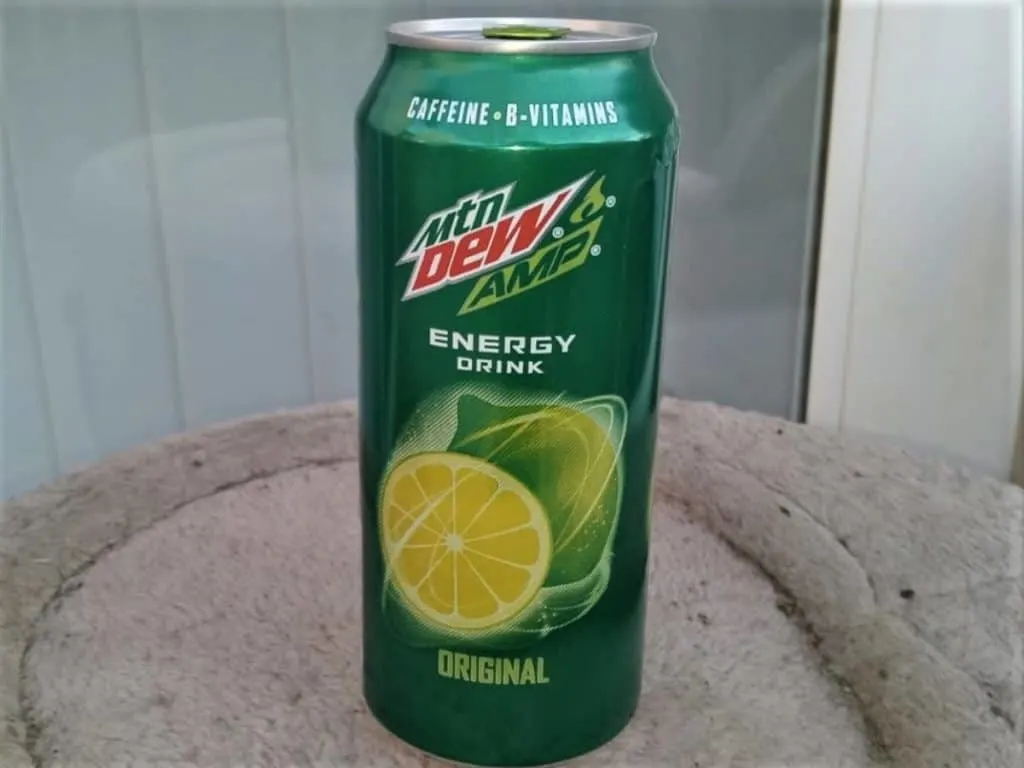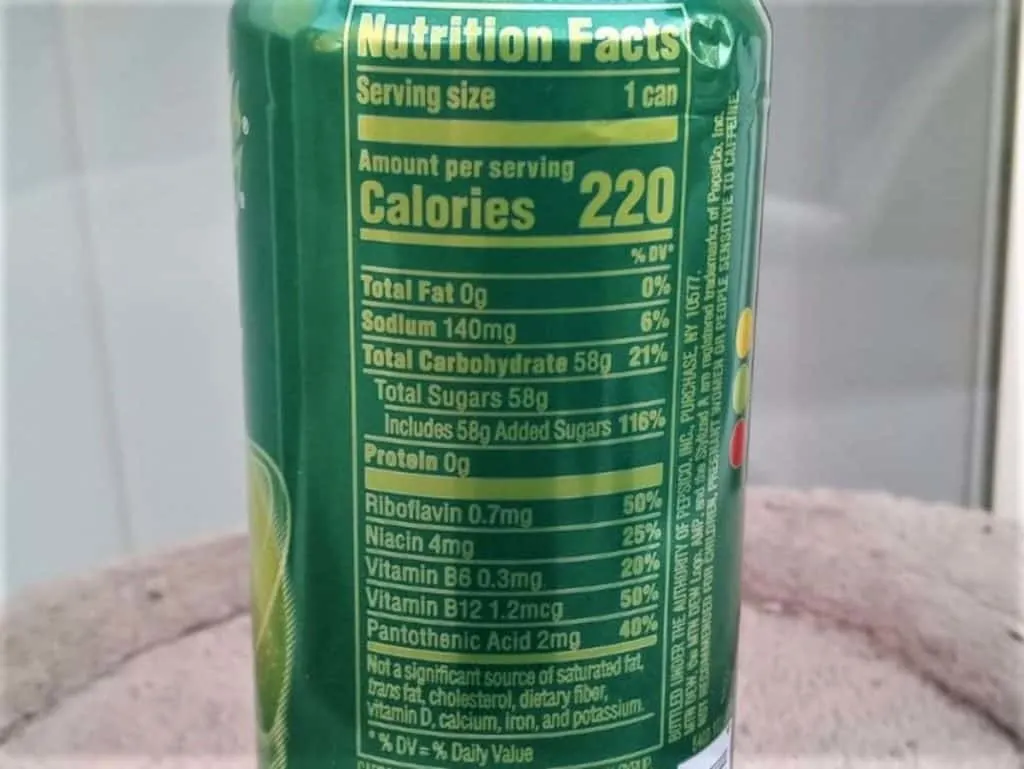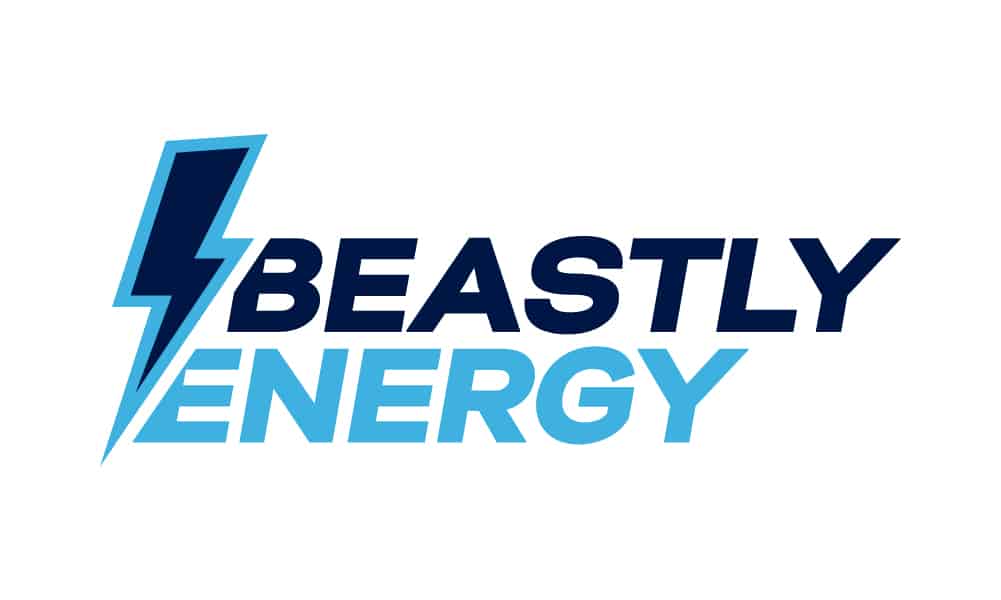Whether it’s to give you that much-needed jolt of vitality in the morning, or some extra fuel to burn on slow afternoons, energy drinks are definitely a pretty good substitute for that morning cup of coffee.
But that innocent-looking can of carbonated, caffeine-infused liquid may be causing you more harm than good.
If you’re a fan of Mountain Dew AMP, then I may have some bad news for you, because it’s definitely not an energy drink that you should be having on the reg.

While I’ve written an article about how many cans of Mountain Dew AMP you can drink in a day, but today I’m going to answer the question: “Is it safe to drink a can of AMP every day?“
The short answer is NO, just as you shouldn’t be drinking more than half a can of AMP a day, you shouldn’t be drinking AMP every day. While it may give you a decent sugary rush, you should be aware of the potential side effects if you do decide to go through with it.
But instead of just ending this article right here and now, let me tell you why you shouldn’t be drinking Mountain Dew AMP every day.
Contents
Who made AMP drink
? PepsiCo developed AMP Energy. It is a PepsiCo subsidiary that was first introduced in 2002. Initially introduced to the market as a “energy supplement,” the drink was only available in a few stores and shops.
Later on, AMP Energy became available in the United States and Canada in 2006. Now, the drink is now sold in more than 20 countries and is one of the most popular energy drinks on the market.
Is It Safe To Drink Energy Drinks Every Day?
While energy drinks are perfectly safe if you’re relatively healthy and consume them in moderation, excessive usage of energy drinks may lead to some detrimental consequences.
Energy drinks have had a bad rep ever since healthcare professionals started pointing out the inherent dangers in consuming them.
By and large, many energy drinks contain stimulants like caffeine and guarana, which are safe in small doses for healthy adults. But a lot of brands rarely stay under the safe limit, sometimes going over the recommended 400mg a day.
Excess caffeine can easily lead to symptoms like anxiety and insomnia which is one of the reasons why children under the age of 18 should not go anywhere near energy drinks because their chances of overdosing are much higher than adults.
Caffeine isn’t the only problem. A majority of brands also have sugar in their formulation, or some other form of sweetener, usually an artificial one like Stevia or sucralose.
Unfortunately, while these artificial sweeteners are initially thought of as the saving grace of energy drinks, they are actually the lesser of two evils.
Artificial sweeteners often come with their own side effects which can be just as serious as the ones you would normally experience from a high sugar diet.
The medical community has not arrived at a unanimous agreement as to the recommended limit of energy drinks, probably because not all brands have the same ingredients or use the same ingredients in the same amount.
Most will suggest that one serving of energy drink a day is usually safe. However, this is general advice and does not take into account the potentially dangerous ingredients that may be in certain energy drinks.
In my personal opinion, you should take a look at the nutrition label and ingredients list of an energy drink before deciding which ones you should have for your daily fix.
What’s Inside a Can of AMP Energy Drink?
Just like most energy drinks, Mountain Dew AMP contains energy boosters, sweeteners, vitamins, additives, and food dyes.
AMP’s energy-boosting ingredients include caffeine (possibly caffeine anhydrous), guarana extract, and panax ginseng root extract. The total amount in the product is 142mg accounting for 36% of the ideal daily intake for a full-grown adult.
AMP’s sweeteners include high fructose corn syrup (HFCS), which is a type of processed sugar. The amount of sugar in AMP accounts for 116% of an individual’s percent daily value, which is 16% more than a full-grown adult needs in a single day.
It’s important to note that for all food products, ingredients are listed by order of quantity, and HFCS is the second ingredient in the list, which means there’s a lot of it.
AMP has a wealth of vitamins, which are listed in the following table along with their properties and percent daily value.
| VITAMINS | FUNCTIONS | %DV |
| Vitamin B2 or Riboflavin | Helps in the digestion and absorption of nutrients; maintains tissue health | 50% |
| Vitamin B3 or Niacin (as niacinamide) | Converts nutrients to energy; repairs DNA; supports system as antioxidant | 25% |
| Vitamin B5 or Pantothenic Acid (as calcium pantothenate) | Breaks down fats and proteins, promotes healthy skin | 40% |
| Vitamin B6 or Pyridoxine (as pyridoxine hydrochloride) | Supports the central nervous system; ensures smooth metabolism | 20% |
| Vitamin B12 or Cobalamin (as cyanocobalamin) | Generates red blood cells; maintains brain function and nerve tissue health | 50% |
AMP also contains well-known food additives like calcium disodium EDTA, sodium benzoate, sodium polyphosphates, and gum arabic.
AMP’s signature green hue is the result of two food dyes Yellow 5 and Blue 1, which I will explain further in this article.
Why AMP Energy Drink May Be Bad For You
Sugar
AMP holds more than twice the amount of the daily recommended sugar intake.
Your body and brain run on glucose, which is sugar. You can get this from proteins and fats and carbs, so your daily diet probably already contains more than the daily amount of sugar that you need.
While essential to the body, carbs, especially simple carbs (white bread, candy, processed white sugar, etc.) have a bad rep of causing a variety of diseases such as insulin resistance and diabetes.
Excess carbohydrates also increase your glycemic index which raises the insulin level in your blood, forcing your body to store more fat.
Dr. Kearns explains in this video that the maximum daily amount should be 6-9 teaspoons a day, around 25-38 grams of sugar.
AMP supplies twice that amount in just one can.
There is a reason why sugar is called the “white death”, processed sugar has been responsible for a multitude of diseases ranging from diabetes to cancer, so it’s best to avoid it as much as possible.
If you drink AMP every day, you will be consuming a heck ton more sugar than you should be.
High Fructose Corn Syrup in Amp
Chemically similar to normal processed sugar, high fructose corn syrup (or HFCS) is a sweetener made from corn starch. It is said to be twice as sweet as regular sugar and possibly twice as deadly.

If you look at the nutrition label at the back of the can, HFCS accounts for the total percentage of added sugar and carbohydrate content in AMP. This means that all 58 grams of sugar in AMP come from HFCS.
You may ask, “what’s so bad about HFCS?”
Well, aside from the usual side effects you would get from the regular consumption of sugar, HFCS is also linked to inflammatory conditions like gout and even life-threatening diseases like cancer.
So I hope this information is a wake-up call for you to reduce the amount of HFCS you consume on a daily basis.
Yellow 5 in AMP Energy Drink
One of the more controversial( and dare I say dangerous) compounds present in the drink that I have talked about extensively in other articles is an artificial food dye known as Yellow 5.
It is also known by other names like E102 and tartrazine.
This compound is known to cause hyperactivity in children and has a genotoxic effect on cells, which points to it being possibly carcinogenic.
It’s no wonder that Yellow 5 is banned in certain countries, namely Norway and Austria.
Blue 1 in AMP Energy Drink
Another controversial food dye that has given Mountain Dew AMP a bad rep in the energy drink community is Blue 1, that when mixed with Yellow 5, gives AMP its signature lime-green color.
A warning to healthcare professionals was published by the FDA detailing the possible risks of consuming excessive amounts of Blue 1. These include blue discoloration of skin and urine, refractory hypotension, metabolic acidosis, and even death.
While experts have admitted that more research needs to be done to obtain irrefutable evidence to confirm the dangers of Blue 1 (and Yellow 5), there is enough existing scientific research to cast a shadow of doubt on the safety of these artificial compounds.
Can I Drink AMP Every Day?
For the sake of your health, you probably shouldn’t be having AMP every day.
By having AMP every day, your basically ingesting twice the amount of sugar you need, every day, which is a lot more than even active individuals can comfortably burn, and all that sugar is eventually going to lead to some notable health issues.
Even with the inclusion of Vitamins and ‘natural’ ingredients, it doesn’t really cover up the fact that having an AMP, while great for an easy sugar-rush, is definitely not the healthiest energy drink on the market.
Furthermore, the inclusion of food dyes and HFCS (among other controversial ingredients) in AMP doesn’t make it a nutritional or healthy energy drink option to be having on the reg.
To conclude, I personally find AMP to not be a healthy energy drink, and there are plenty of other options that are far more suited for daily consumption, so for the sake of your health, I highly recommend not having AMP every day.
Is AMP Energy still a thing?
AMP Energy is still manufactured and accessible in most stores. It is also popular because it is a delicious energy drink that provides a long-lasting energy boost.
Moreover, energy drink enthusiasts and fitness coaches recommend AMP Energy drink. They are available in many European and Asian countries, including the United States, Canada, and the United Kingdom.
Personal Opinion
Due to AMP‘s fairly excessive sugar content, please do not have a can of AMP Energy Drink every day for the sake of your health.

The fact that AMP Energy will definitely overload your body with sugar, in addition to possibly endangering your health with possibly carcinogenic food dyes makes it a pretty poor choice for daily consumption.
Take my advice and try and find a brand with more reasonable ingredients and composition, or simply stick to coffee or tea which will give you the dose of caffeine you need.
But if you’re a fan of AMP and don’t want to give it up, I suggest reducing your intake to once or twice a week and don’t eat any sugar for the rest of the day when you do.
